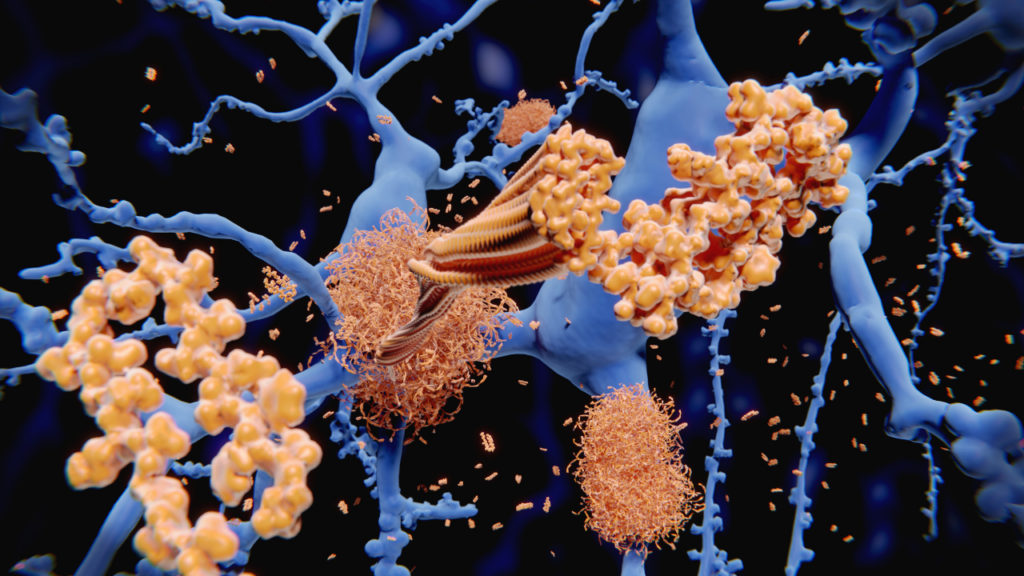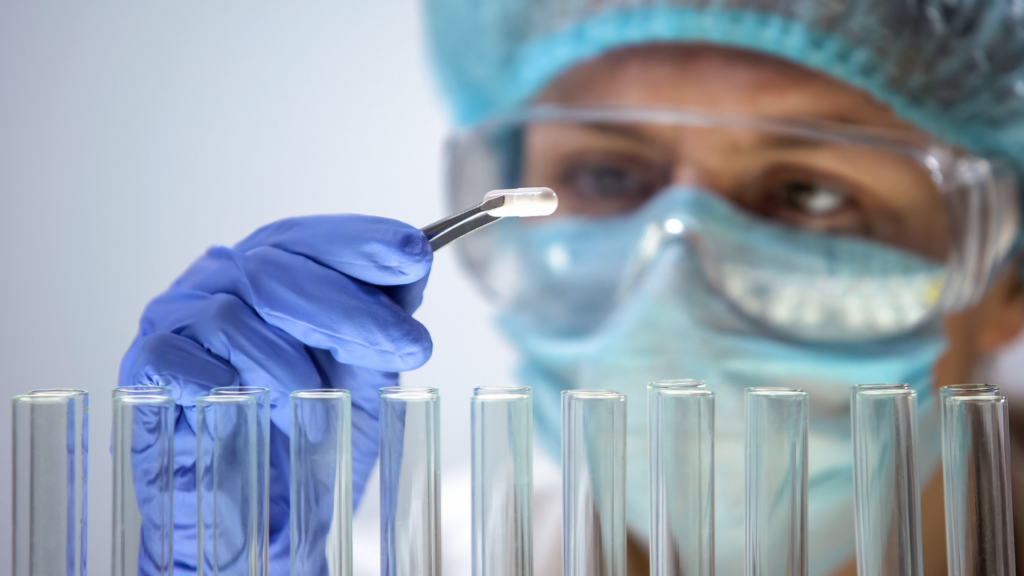|
Getting your Trinity Audio player ready...
|
In the intricate world of molecular biology, peptides and proteins perform a routine, central to life itself. Imagine your body as a bustling city where proteins are the towering skyscrapers, handling all the important jobs. But they don’t work alone! Picture tiny messengers called peptides zipping around, delivering instructions, and coordinating everything.
That’s the fascinating world of protein-peptide interactions. This synergy is not merely a biological phenomenon; it underlines numerous industrial applications ranging from pharmaceuticals to agriculture.
Peptides and Proteins: The Basics
What Are Peptides?
Peptides are small molecules composed of amino acids, the basic building blocks of life, linked together by peptide bonds. Typically shorter in length than proteins, peptides can range from mere dipeptides, with only two amino acids, to polypeptides approaching the complexity of proteins. Their role is not just subsidiary – peptides can be potent influencers of biological activity in their own right. Their stability and selectivity make them vital players in cell signaling and function.
The Role of Proteins in Cells
Proteins, which are made up of one or more long polypeptide chains, are fundamental workhorses of biological lifeforms. They are remarkably diverse in structure, ranging from simple linear arrangements to complex tertiary and quaternary forms, where their functions become exceedingly specialized. Acting as enzymes, hormones, and antibodies, they are involved in virtually every cellular process.
Understanding the Difference Between Peptides and Proteins
While both peptides and proteins are constructed from amino acids, the primary differences lie in their sizes, structures, and functions. Proteins are typically larger, embodying one or more polypeptide chains with tertiary or quaternary structures giving rise to specific biological roles.
Peptides, in comparison, are structures smaller in size and typically serve specialized supplementary roles. They often act as hormonal triggers or signaling molecules (i.e., ligands) binding to receptors to initiate or disrupt specific biological responses. peptides are not just secondary elements but can also be precursors, laying down the groundwork for proteins to emerge.

The Impact of Peptides on Protein Function
Peptides as Signaling Molecules
As ligands, peptides possess a selectivity that allows them to engage specifically with g-protein-coupled receptors, engendering cascades of intracellular events. This specificity enables them to operate as hormones, such as insulin, directing crucial functions like glucose metabolism and growth factors in tissue repair and regeneration.
Enzymatic Regulation by Peptides
Peptides are formidable regulators of enzymatic activity. Some act as inhibitors, effectively modulating the pace of biochemical reactions by interlocking with the active sites of enzymes. Others may act as co-factors, enhancing the catalytic abilities of certain enzymes vital for metabolic pathways.
Peptides in Protein Synthesis
In the assembly of proteins, peptides serve as both intermediates and regulators. Peptide bonds form the backbone of polypeptides as they mature into fully functional proteins. Some peptides function in a regulatory capacity, modulating the machinery of protein synthesis to ensure that cellular resources are utilized optimally.
The Rising Interest in Peptides in Journals and Newsletters
Keeping abreast of the latest developments in peptide and protein research is crucial for professionals in the pharmaceutical industry. Newsletters and scientific journals are chock-full of insights into clinical trials, FDA-approved treatments, and pre-clinical studies that are shaping the future of medicine.

Real-World Applications of Peptides with Proteins
Peptides in Medical Research
The pharmaceutical industry has seen a surge in the therapeutic use of peptides. For instance, a study was done on how insulin is used for managing blood sugar levels in diabetes. Whereas an article showed how a monoclonal antibody such as Herceptin (trastuzumab) can be used for breast cancer treatments. The allure of peptides in drug development also extends to anti-cancer, and autoimmune disease therapies, where peptides like Humira (adalimumab) and other immune blockade inhibitors have come to the forefront.
Agricultural Applications of Peptide Technologies
In the agricultural sphere, research has shown peptides have been utilized as biodegradable alternatives to conventional insecticides and fungicides. With concern over DDT residues and rising antibiotic resistance in bacteria, peptides offer a functional, yet environmentally sensitive alternative.
Peptides in the Development of Drugs and Medications
There is a palpable excitement among biochemists and drug developers due to the inherent potential of peptides to improve drug efficacy. For instance, peptides can increase the stability and potency of therapeutic molecules, turning previously intravenous or subcutaneous treatments into oral medications. This is a groundbreaking development that can improve patient comfort and compliance.
Researchers are exploring the benefits of peptides in creating medications that are more selective, with fewer side effects than traditional small molecule drugs. The emergence of new strategies to overcome the innate instability of peptides and enhance their bioavailability marks an exciting chapter in drug discovery.
Summary
From a molecular standpoint, the collaborative relationship between peptides and proteins is astonishingly complex yet undeniably crucial for various biological functions. This partnership is pivotal both in nature and in numerous domains like medical research and agriculture, providing endless possibilities for innovation.
FAQ
What are peptides and how do they work with proteins?
Peptides are miniature chains of amino acids that act in concert with proteins to regulate and facilitate countless biological functions. They may initiate, modulate, or directly participate in the creation and activity of proteins within the body.
How do peptides interact with proteins at a molecular level?
On a molecular level, peptides can interact with proteins as signals, triggers, or inhibitors. They bind to specific receptors, influencing the behavior of proteins by altering their conformation, activity, or production.
What are some examples of peptides working in tandem with proteins?
Examples include the insulin peptide regulating blood sugar levels by prompting cells to absorb glucose, and growth factors stimulating cell growth and healing by activating related proteins.
How can understanding the relationship between peptides and proteins impact medical research and treatment development?
A detailed understanding enables researchers to design targeted therapies that can better treat diseases by mimicking, boosting, or inhibiting natural peptide-protein interactions, leading to more effective and potentially less harmful treatments.
Disclaimer: Please note that many peptide therapies are not FDA-approved and their efficacy and safety have not been fully established. It is crucial to consult with your healthcare provider before starting any new supplements or treatments, including peptide therapy.
References
Rothman, James E. “Polypeptide chain binding proteins: catalysts of protein folding and related processes in cells.” Cell 59, no. 4 (1989): 591-601.
Cattaneo, Fabio, Germano Guerra, Melania Parisi, Marta De Marinis, Domenico Tafuri, Mariapia Cinelli, and Rosario Ammendola. “Cell-surface receptors transactivation mediated by g protein-coupled receptors.” International journal of molecular sciences 15, no. 11 (2014): 19700-19728.
Khavinson, Vladimir Khatskelevich, Irina Grigor’evna Popovich, Natalia Sergeevna Linkova, Ekaterina Sergeevna Mironova, and Anastasiia Romanovna Ilina. “Peptide regulation of gene expression: A systematic review.” Molecules 26, no. 22 (2021): 7053.
Kent, Stephen BH. “Chemical synthesis of peptides and proteins.” Annual review of biochemistry 57, no. 1 (1988): 957-989.
Donner, Thomas, and Sudipa Sarkar. “Insulin–pharmacology, therapeutic regimens, and principles of intensive insulin therapy.” (2015).
Bayram, Nazende Nur, Gizem Tuğçe Ulu, Nusaibah Abdulsalam Abdulhadi, Seda Gürdap, İsmail Alper İşoğlu, Yusuf Baran, and Sevil Dinçer İşoğlu. “HER2-Specific Peptide (LTVSPWY) and Antibody (Herceptin) Targeted Core Cross-Linked Micelles for Breast Cancer: A Comparative Study.” Pharmaceutics 15, no. 3 (2023): 733.
Zhang, Yi-Meng, De-Xing Ye, Yan Liu, Xin-Yuan Zhang, Yuan-Lin Zhou, Li Zhang, and Xin-Ling Yang. “Peptides, new tools for plant protection in eco-agriculture.” Advanced Agrochem (2023).






